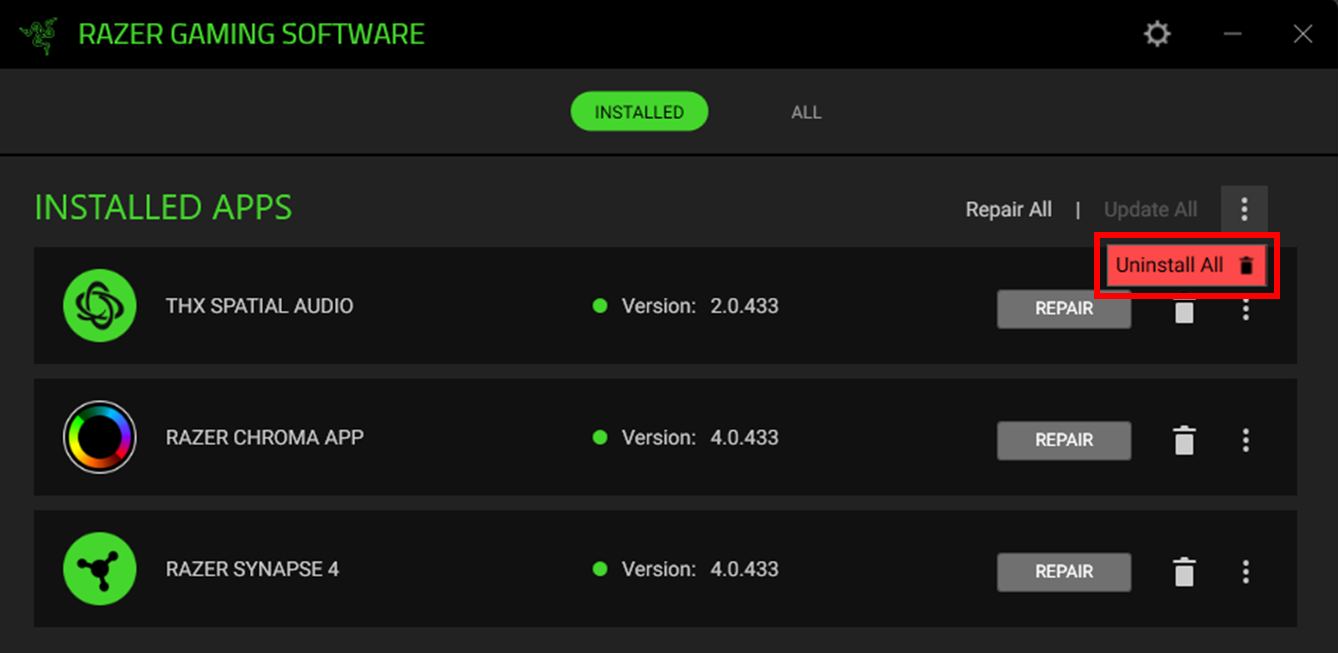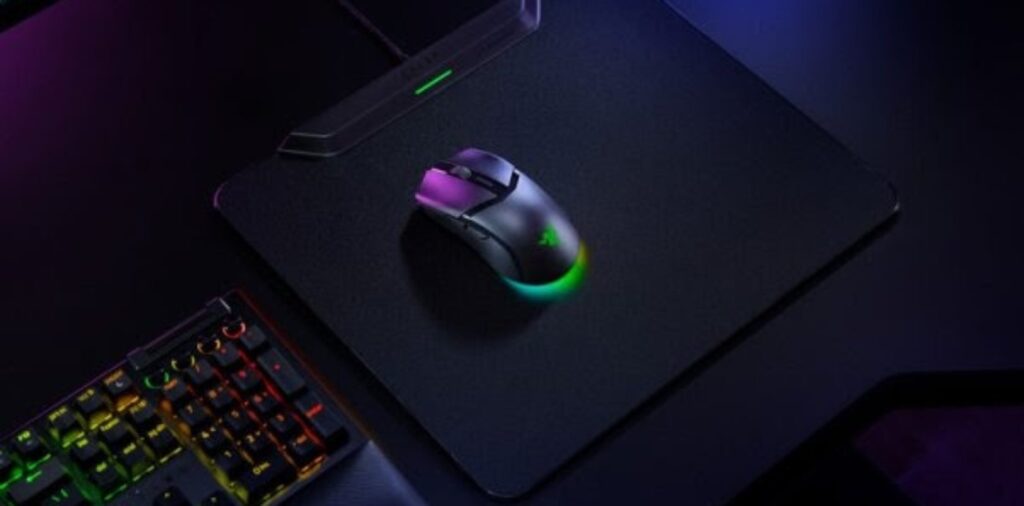- The standard uninstall doesn't delete everything; you need to clean up files, drivers, and the registry.
- SFC and DISM repair system damage that aggravates Synapse crashes.
- Windows Update may force HID drivers; hide them or disable their installation.

¿How to clean Razer Synapse residual files on Windows? When Razer Synapse starts to hang or get stuck after an update, there are almost always remnants of software, drivers or services that remain active and cause conflicts. In Windows, a normal uninstall rarely deletes everything, which explains why, even after reinstalling or using third-party uninstallers, problems persist.
This article brings together and organizes in one place what people often learn through trial and error: How to completely uninstall Synapse and remove its residual files, what to do if Windows insists on offering a driver like "Razer Inc – HIDClass – 6.2.9200.16545," and how to repair system components if they've become damaged. If you're in a hurry, the last paragraph contains a TL;DR with the essentials.
What's happening and why a deep clean is important
When Synapse suddenly crashes after a week or after an update, it is usually due to leftover files, registry keys, background services, or HID drivers that weren't removed properly. These remnants can interfere not only with Synapse, but also with your new mouse or keyboard, causing crashes and misdetections.
Additionally, Windows Update may detect the presence of related packages and continue to offer Razer driver updates (for example, the infamous “Razer Inc – HIDClass – 6.2.9200.16545”), even if you no longer use Razer devices. This is a clear sign that there’s still “something” left in the system.
Before you begin: backup and preparation
Although the process is safe if done carefully, it is advisable to prepare the ground. Create a restore point Windows and a copy of the Registry in case you need to go back. This will serve as a safety net in case you delete something you shouldn't have.
I also recommend that you log in with an account with administrator permission, close everything you don't need, and if possible, connect your computer to the internet. For some system checks (SFC and DISM), it's best to be online.
Step 1: Close Synapse from the tray

If Synapse is active, close it before touching anything. Right-click the Synapse icon in the taskbar and choose Exit or Close Razer Synapse. You will avoid locked files during uninstallation.
Step 2: Standard Uninstall of Razer Synapse (and components)
Go to Windows Settings and go to “Apps” > “Apps & features.” Locate “Razer Synapse” and tap on uninstallIf other Razer modules (e.g., SDKs or utilities) appear, uninstall them from here as well to start with a cleaner base.
This step removes the main software, but don't be too confident: real experience shows that folders, drivers and keys remain that the uninstaller doesn't delete. That's why we continue with manual cleaning.
Step 3: Remove leftovers from the file system
Open File Explorer, select “This PC” and in the top right search box type Razer. Let Windows find all the matches and carefully delete any results that are clearly related to the brand (folders like Razer, Synapse logs, etc.).
In addition to global search, check out these common routes, which often accumulate debris:
C:\Program Files\Razer\, C:\Program Files (x86)\Razer\, C:\ProgramData\Razer\, %AppData%\Razer\ y %LocalAppData%\Razer\If they exist, delete them. If any files are in use, restart and try deleting them again.
Step 4: Clean hidden devices and drivers
Many users report that even after removing Synapse, Windows still “sees” a Razer component. The culprit is usually residual HID drivers or hidden mouse/keyboard devices.
Open Device Manager, click "View," and select "Show hidden devices." Review these categories: User Interface Devices (HID), “Mice and other pointing devices,” “Keyboards,” and “Universal Serial Bus controllers.” If you see Razer items, right-click > “Uninstall device,” and when it appears, check the box. “Delete the driver software for this device”.
Repeat this process for all the Razer devices you find, including the "ghost" ones (they'll appear dimmed). When you're done, restart your computer so Windows can truly uninstall those drivers and inputs.
Step 5: Windows Registry (only if you feel comfortable)
This step is optional, but very effective for leaving your system clean. Open the Registry Editor (Win + R, type regedit) and before touching anything creates a Backup: File > Export, selecting “All.” This way, you can restore if something goes wrong.
Now click on “Team” at the top, press Ctrl + F and search for the word Razer. Navigate with F3 through the results and delete only the keys/values that clearly belong to Razer. Avoid deleting suspicious entries. Take it easy: a thorough cleanup here will prevent Synapse from carrying over issues if you decide to reinstall in the future.
Step 6: Repair system files with SFC and DISM
If Synapse suddenly crashed or stopped responding, there may also be corruption of system filesMicrosoft recommends using two built-in tools: SFC and DISM, which don't affect your documents.
Open “Command Prompt (Admin)” or “Windows PowerShell (Admin)” with Win + X. Run these commands one by one, waiting for them to finish:
- sfc /scannow
- DISM.exe /Online /Cleanup-image /Scanhealth
- DISM.exe /Online /Cleanup-image /Restorehealth
After completing, restart the computerThis maintenance corrects integrity and usually stabilizes the system.
Step 7: Clean boot to rule out conflicts
A “clean start” helps detect if thirdparty services interfere with Synapse or HID drivers. Open System Configuration (msconfig), go to the Services tab, check "Hide all Microsoft services," and click "Disable all."
Then open the Task Manager, "Startup" tab, and disable non-essential startup applications. Restart. With this minimal startup, you can check if the system behaves properly without additional software layers.
What to do if Windows keeps saying “Razer Inc – HIDClass – 6.2.9200.16545”
If, even after cleaning hidden drivers, Windows Update offers you that Razer package, it means that it still detects a HID compliant device or that the driver catalog contains a match. First, go back to Device Manager and uninstall any traces of Razer using the "Delete Driver Software" checkbox. Reboot.
If it persists, you have two ways to prevent it from reappearing: 1) disable the automatic download of drivers from “Advanced device installation settings” (in the Control Panel, “Hardware and Sound” > “Devices and Printers”, right click on the computer > “Device installation settings” and check that No. drivers are downloaded from Windows Update), or 2) hide/pause the specific update using Microsoft's "Show or hide updates" troubleshooter. This second option, although a workaround, is usually enough to get stop trying to install that particular HIDClass.
Performance troubleshooter and temporary file cleaner
To finish, execute the performance troubleshooter Windows and clean up temporary files. Go to Settings > System > Troubleshoot and look for performance/optimization wizards. You can also use Disk Cleanup or Storage Sense to delete temporary and non-critical residual files.
What if I want to reinstall Synapse later?
A clean reinstall is possible when the system is free of debris. Download the latest version from Razer websiteInstall the antivirus in normal mode and, after the first startup, check for blockages. If everything goes well, you can reactivate your startup apps and services one by one to see if anything external is interfering.
Note for macOS (in case you migrated between systems)
If you've ever used Synapse on macOS, the cleanups are different. There they are used LaunchAgents and support routes. The reference commands used in Terminal are:
launchctl remove com.razerzone.rzdeviceengine
launchctl remove com.razer.rzupdater
sudo rm /Library/LaunchAgents/com.razerzone.rzdeviceengine.plist
sudo rm /Library/LaunchAgents/com.razer.rzupdater.plist
And then, for folders: sudo rm -rf /Library/Application\ Support/Razer/ y rm -rf ~/Library/Application\ Support/Razer/. Although we're focusing on Windows here, including it helps if you work with mixed teams.
Practical tips if Synapse freezes
If Synapse started crashing “overnight,” it’s not always the program’s fault alone. Other RGB apps like Corsair iCue, overclocking layers and peripherals from other brands can crash into services from Synapse. A clean boot reduces that risk and will allow you to identify the culprit.
It is also helpful to check the Windows Event Viewer under “Windows Logs” > “Application and System” to locate matching errors at the time of the crash. If you see repeated entries linked to Razer, HID services, or .NET, this confirms that the cleanup and repair we propose is justified.
Quick FAQ
Will I lose basic mouse/keyboard functionality without Synapse? In general, Razer peripherals work as standard HID devices without the software. What you lose are advanced settings, macros, or custom lighting, not basic usability.
Is it mandatory to edit the Registry? No. If you don't feel comfortable, you can skip the Registry. Often, simply deleting residual folders, hidden devices, and running SFC/DISM is enough to return everything to normal.
Can I use a third-party uninstaller? Yes, but even with tools like Revo Uninstaller, some leftovers slip through the net. That's why the combination of uninstallation + manual cleaning in files, drivers and registry gives better results.
Final checklist of verifications

Before terminating the process, make sure there are no more Razer folders in Program Files, ProgramData, or AppData, which Device Manager does not show. Razer hidden inputs and that Windows Update has stopped showing “Razer Inc – HIDClass – 6.2.9200.16545”. If all of these are true, you’ve done a complete cleanup.
If you reinstall Synapse, try it for a few days. If the crashes reappear, consider checking the Registry again and trying again. CFS and DISM, or stay without Synapse if you don't need its features in your daily workflow.
Additional resource: Razer manuals and documentation can provide clues about the components installed in each device. For example, this official PDF is an example of accessible documentation: Download PDF. It's not essential for cleaning, but have references help.
If you only want the essentials: uninstall Razer Synapse from “Applications”, delete its folders (Program Files/ProgramData/AppData), remove the Razer HID devices (including hidden ones) in Device Manager by checking “Delete Driver Software”, clean the Registry by searching for “Razer” if you feel confident, run sfc /scannow and DISM commands, and reboot. If Windows insists on "Razer Inc – HIDClass – 6.2.9200.16545," hide that update or disable automatic driver installation. These steps will clear your system of junk and stop Synapse from causing trouble. Now you know How to clean Razer Synapse residual files on Windows.
Passionate about technology since he was little. I love being up to date in the sector and, above all, communicating it. That is why I have been dedicated to communication on technology and video game websites for many years. You can find me writing about Android, Windows, MacOS, iOS, Nintendo or any other related topic that comes to mind.
